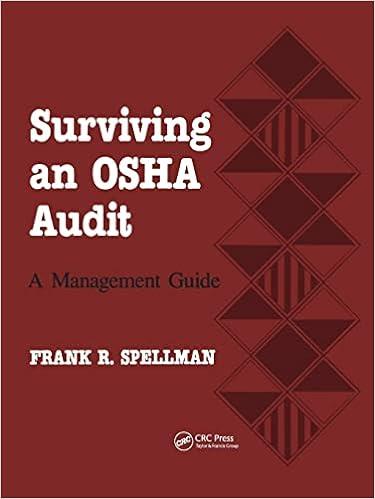
B= 0 (e) Using this function, substiilite the following values for k and fill in the table below. Compare the values to the corresponding "equal-tempered" frequencies for the A scale starting from A4. 5,5 Note TABOW DEF# G#IA Whole tones k 0 1 2 2.5 3.5 4.5 f(k) "Equal tempered" frequency (HA) 440 493.88 554.37587.33659.25 793.99 830.61 880 07 How well does this function do in matching the frequencies? (0)= 440.2% = 440 1)=440.220 - 493.88 2) = 44026 = 554.37 This function matches the frequencies Note there is no one standard for frequencies; we've referenced the http://pages.mtu.edu/ suitsotefreqs.html for these values. (c) Notes are often thought of as some fund position www from Frample, a third is 2 whole tones from the bows a "fifth is 3.5 whole toes from the bar some fixed position away from is an A (400 Hz), then the third JS whole toons from the below be whole tones from the base en the "third in a C is C# (154.37 H) and the M 7 Hal and the than E (680.25 Ha). Does the freque depend linearly on boletos from the Why or why t 440 Siope (a) Find values for the parameters in an exponentially rowing function which takes in a number of whole tones k away from the base, and returns the frequency of the notes (A) =a.3A/B for which /(0) -410 and (6) - 880. What is the doubling time" here? Qublino tine f-0.258 440-6296 = 2.20 440 = x for 440.248 880-440-2p 2 = 2/3 880 - 440.25 doubirna tire is K-6. When freg is 880 K=0>initial B-66 (c) Using this function, substiilite the following values for k and fill in the table below. Compare the values to the corresponding "equal-tempered" frequencies for the A scale starting from A4. A 0 B 1 C# 2 D 2.5 E 3.5 F# 4.5 G# 5.5 A 6 Note Whole tones k f ) "Equal tempered" frequency (Hz) 440 493.88 554.37587.33 659.25 | 793.99830.61 880 How well does this function do in matching the frequencies? 1)= 440.2% 440 3-440.22 = 493.88 J = 440*2 = 554.37 This function matches the frequencies B= 0 (e) Using this function, substiilite the following values for k and fill in the table below. Compare the values to the corresponding "equal-tempered" frequencies for the A scale starting from A4. 5,5 Note TABOW DEF# G#IA Whole tones k 0 1 2 2.5 3.5 4.5 f(k) "Equal tempered" frequency (HA) 440 493.88 554.37587.33659.25 793.99 830.61 880 07 How well does this function do in matching the frequencies? (0)= 440.2% = 440 1)=440.220 - 493.88 2) = 44026 = 554.37 This function matches the frequencies Note there is no one standard for frequencies; we've referenced the http://pages.mtu.edu/ suitsotefreqs.html for these values. (c) Notes are often thought of as some fund position www from Frample, a third is 2 whole tones from the bows a "fifth is 3.5 whole toes from the bar some fixed position away from is an A (400 Hz), then the third JS whole toons from the below be whole tones from the base en the "third in a C is C# (154.37 H) and the M 7 Hal and the than E (680.25 Ha). Does the freque depend linearly on boletos from the Why or why t 440 Siope (a) Find values for the parameters in an exponentially rowing function which takes in a number of whole tones k away from the base, and returns the frequency of the notes (A) =a.3A/B for which /(0) -410 and (6) - 880. What is the doubling time" here? Qublino tine f-0.258 440-6296 = 2.20 440 = x for 440.248 880-440-2p 2 = 2/3 880 - 440.25 doubirna tire is K-6. When freg is 880 K=0>initial B-66 (c) Using this function, substiilite the following values for k and fill in the table below. Compare the values to the corresponding "equal-tempered" frequencies for the A scale starting from A4. A 0 B 1 C# 2 D 2.5 E 3.5 F# 4.5 G# 5.5 A 6 Note Whole tones k f ) "Equal tempered" frequency (Hz) 440 493.88 554.37587.33 659.25 | 793.99830.61 880 How well does this function do in matching the frequencies? 1)= 440.2% 440 3-440.22 = 493.88 J = 440*2 = 554.37 This function matches the frequencies








